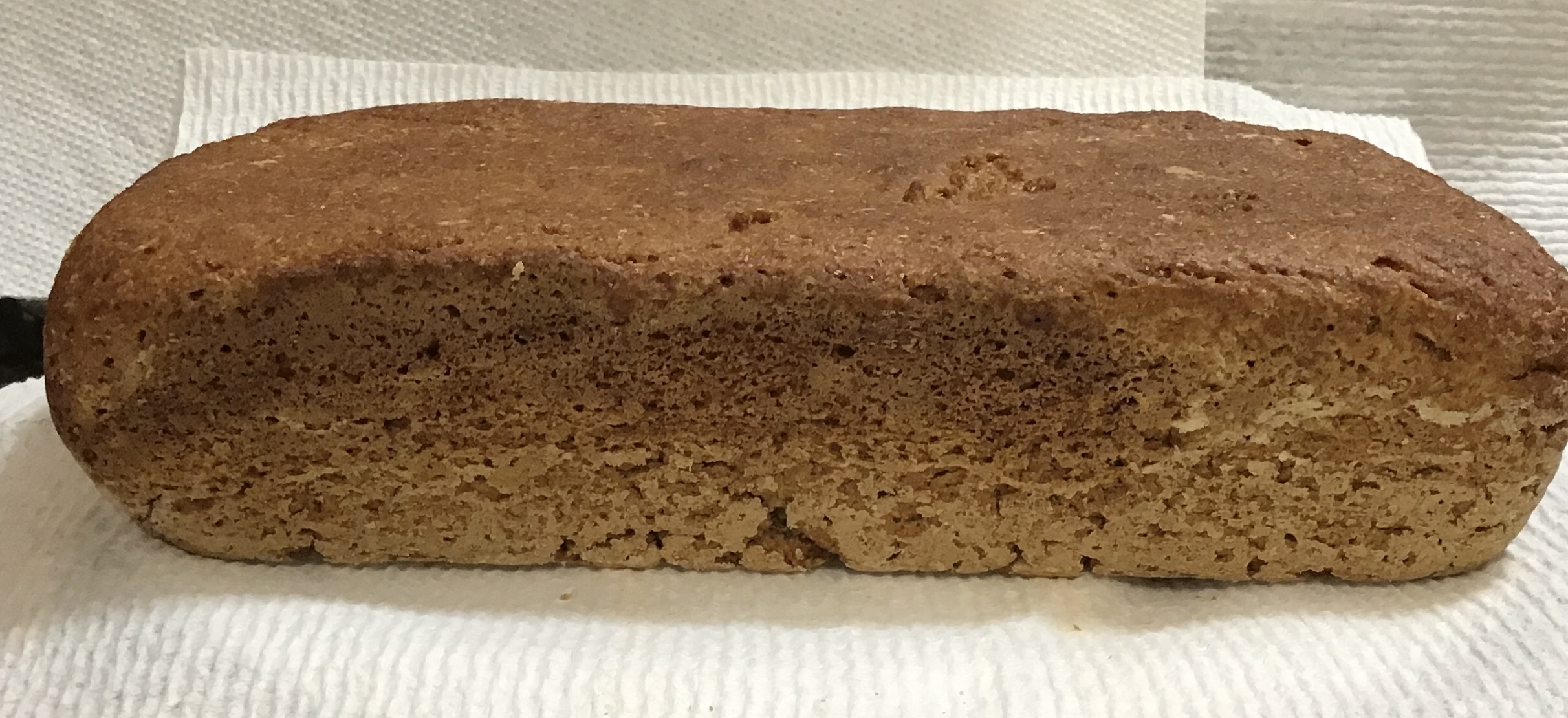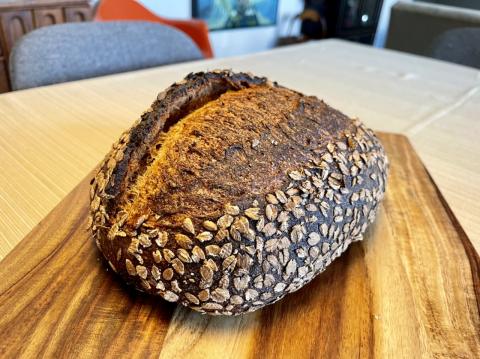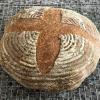Jan. 6 - 7, 2022. 78th bake. RYE!
This will be my first attempt at a 100% rye. I'm kind of following Denisa's post here:
https://www.thefreshloaf.com/node/67054/100-whole-grain-rye-sourdough-bread
The goal is to divide her formula by 3 and make one loaf of about 835 g.
My first change, due to the fact that I did not plan ahead, and wanted to get started tonight, was that I did not prepare a fully fermented seed. I had a 100% whole rye starter (fully fermented, then put in fridge) going, but yesterday I added enough whole rye (no water) to the cold starter to make it stiff, and put it immediately back in the fridge, so the added flour was/has not fermented.
I intend to make up for that by using 20 g of under-developed stiff starter instead of 16.7 (50 / 3) g of ripe 100% hydration starter. That's just a guess.
I'm also not going to be able to maintain room temp (21 C, 70 F) over-night in the stove with the light on. So, I will need to extend the pre-ferment beyond the 10 hours specified in her formula, and hopefully look for the same development as shown in her video.
Here's the stone-ground whole rye flour that I used for both the pre-ferment and the final dough:
https://www.thefreshloaf.com/node/69305/
The pre-ferment, at 7:45 pm:
20 g stiff, not fully-developed, rye starter. (would have been 50/3 = 16.7 g of 100% hydration rye seed/chef/starter.)
148 g water. 420 / 3, plus extra to bring stiff starter to 100% hydration.
140 g whole rye flour, stone-ground, Malsena brand. 420 / 3 = 140 g.
--
Her timings and temperatures:
- Pre-ferment: 10 hours at 21 C / 70 F. Should see bubbles through glass container.
- Mix.
- First rise (bulk ferment), 1 hour at 29 C / 84 F.
- Pan the dough, 2nd rise (proof), 1.5 hours at 29 C / 84 F. Look for small cracks and pinholes.
- Bake with steam, 15 minutes, at 260 C / 500 F.
- Remove steam, bake 45 minutes at 200 C / 390 F.
- Remove from oven, wrap in towels for 24 hours, or a minimum 5 hours.
Jan. 7, 2022.
5:45 am. Checked oven. It was 70 F after all, and the pre-ferment was now at the 2.5 cups mark, and well aerated, so I put it in the fridge.
6:45 am. Took pre-terment out of fridge, now at 2 cups level. Warmed some water and began mixing.
Final dough:
all the pre-ferment.
warm water: 725 / 3 = 241 g.
whole rye flour: 825 / 3 = 275 g.
salt: 15 / 3 = 5 g.
honey (or barley malt syrup): 50 / 3 = 16 g.
7:00 am. Finished mixing. Dough temp = 69.9 F. Bulk ferment (first rise) in oven, about 29 C / 84 F.
8:00 am. Greased a loaf pan with Crisco shortening (out of butter) and lightly floured it, as per video. (Video specified butter.)
8:07 am. Finished panning the dough. Back in oven, aiming for 84 F air temp.
8:52 am. Start oven pre-heat to 260 C / 500 F. Hope to be ready by 9:37 am. Yes, I took the proofing dough out of the oven before starting the pre-heat. ;-)
Start bake:
I forgot to take a photo. Top of loaf has some pin-holes. Mostly toward edges. Not as many holes as in Denisa's video, but decided a slight under-fermentation was better than risking a collapse.
9:43 am. Put loaf in oven. Poured 3/4 cup boiling water in steam pan. Oven thermostat set to 500 F, the highest it goes, but this oven is always low by 25 degrees, according to an oven thermometer, so it's only 475 F. I'll give it 2 extra minutes to compensate, before lowering temp.
10:00 am. Lower temp to 200 C / 390 F. (415 F setting on my oven.)
Looking for a 95 C / 203 F internal temp according to the video.
10:43 am. Take out. Internal temp 208.9 F. The loaf collapsed evenly, and is at least 1/2" lower than when it went in the oven.
Let it sit out about 2 hours to cool. And then put in a plastic bag.
5:15 pm. I couldn't wait, and I cut it open. Crumb is nice, but a little moist. I should have wrapped it in a kitchen towel like Denisa said to in the video.
Crust is thick. Taste is good. I can smell and taste the honey. I miss the caraway and coriander, so I'll include bread spice next time.
----
Pre-ferment starter at 1 cup level:

Top of pre-ferment, right after mixing:

Cold pre-preferment, it shrunk from 2.5 cups to 2 cups while in fridge:

Top:

Bottom:

Side:




 Normally I use the cloth liner in my baskets while proofing and never have issues. This time I wanted the spiral design so I took the liner out and placed dough directly in the banneton.
Normally I use the cloth liner in my baskets while proofing and never have issues. This time I wanted the spiral design so I took the liner out and placed dough directly in the banneton. 





















